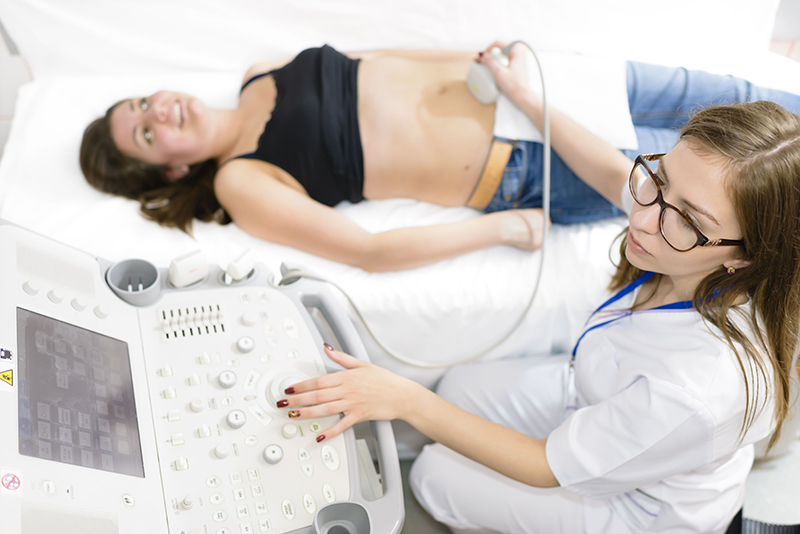What 10 years of experience in non-invasive prenatal testing applications can tell us l BGI Perspectives
2022-12-12
An informative talk with Iris Meng, Foetal Medicine Specialist at the Shanghai First Maternity and Infant Hospital about the applications of non-invasive prenatal testing (NIPT).
What are the purposes
and goals of prenatal screening methods?
We want to determine the high-risk populations from normal pregnancies and provide a diagnosis for these individuals. For example, for trisomy 21, 13, and 18, we will use ultrasound, maternal serum, and NIPTs to screen the high-risk population. Then, invasive prenatal testing like chorionic villus sampling (CVS) or amniocentesis will be provided.

What are the most
popular prenatal screening methods, and how has recent innovation changed
prenatal testing strategies?
Common prenatal screening methods involve first-trimester screening, quadruple screening, and integrated screening. We commonly use first-trimester screening with a detection rate of about 85% from 2007-2016. In 2016, we stopped the first-trimester screening and instead used the nuchal translucency (NT) screen combined with the quadruple screen, which was not commonly used for prenatal screening.
Around this time, cfDNA technology developed rapidly. cfDNA exists in maternal circulation and was found in 1997 by Professor Dennis Lo. It originates from the placenta, with 5% to 30% in the maternal plasma. Next-generation sequencing-based techniques helped to make this a viable diagnostic screening method.
This exciting technology greatly affected our screening strategy. In 2008 we started technology exploration, and in 2012, multi-center trials were performed. In 2014, a guideline was published, approved by the SFDA, and our center became one of the 108 pilot units to perform this test. In 2016, the policies began weaving the NIPT test into the prenatal system.
Please can you provide an overview of your center’s current screening strategy?
In 2009, the first foetal medicine outpatient clinic in China was set up at the Shanghai First Maternity and Infant Hospital in Shanghai.
In 2010, under the leadership of Prof Luming Sun, Director of the Foetal Medicine Department, the Shanghai First Maternity and Infant Hospital also became the first medical institution in China to propose and standardize foetal medical diagnosis and treatment services.
With the mission of establishing a foetal medical centre that aligns with international standards, Prof Sun and her team spent the last 10 years continuing the development of their centre, and it has now become one of the most important centres that leads the development of foetal medicine in China.
Nowadays, our center has a sequential screening strategy for our patients. Step one is focused on background risk estimation, where we give the nuchal translucency scan, and for those very sick or with some severe anomaly problems, we will skip to the CVS. For those who are not considered severe or part of the normal population, there is the option to have either the quadruple or NIPT test, as well as a follow-up anomaly scan for structural problems.
After this screening strategy, we will select those of medium risk. For different conditions, different management is provided, like NIPT. For those that are high-risk, CVS or other avenues would be carefully provided. All of these tests would involve pretest and post-test counselling.
What is the NIPT timeline in your center?
We have a relatively long history of prenatal diagnosis in China, and we have around 30,000 deliveries per year in our hospital. We have completed over 30,000 cases for CMA and over 100 cases for WGS platform exploration.
For the NIPT, we started
clinical research in 2011. In 2016, we provided clinical applications for
pregnancies. Recently, in 2020, the localization of this NIPT test team
finished and expanded NIPT testing for pregnancies if needed.

What are prenatal testing options provided by your center?
We provide the basic NIPT for common trisomies, sex chromosomal abnormalities (SCAs), microdeletion and microduplication (MMS) if necessary, and expanded NIPTs. The sample size has been around 65,000 over the last four years.
The NT combined NIPT screen strategy that we developed seems to perform well in the clinical setting in common aneuploidies for both single and twin pregnancies. More exploration, however, is still needed for MMS and other rare conditions.
What aspects of prenatal testing would you like to be able to explore in the future?
I would love to know how NIPT can be more widely applied throughout the industry and if these NIPT numbers would increase in continuity. However, I think this depends on two factors. First, it will be based on whether NIPT is considered cost-effective by the wider population. More evidence, such as government subsidies or insurance policies is needed to determine this. Secondly, there is still a demand for more technical exploration, for example, of MMS or single gene disorders. There are still so many things we need to explore in this field.
Additional Reading
What parents need to know about prenatal tests l BGI Perspectives
How Noninvasive Prenatal Testing (NIPT) can help expecting parents l BGI Perspectives
Nutrition and Prenatal Tests are Vital for Future Parents l BGI Perspectives
How the latest treatments and prenatal tests help with infertility problems l BGI Perspectives
About NIFTY®: Non-invasive prenatal testing
To learn more about the NIFTY® Test - the world's leading non-invasive prenatal testing (NIPT), please see our website. The NIFTY Test is suitable for pregnant women from 10 weeks of pregnancy, with an estimated turnaround time of under seven days. There are over 10,000,000 NIFTY samples processed as of 2021.
About BGI Genomics
BGI Genomics, headquartered in Shenzhen China, is the world’s leading integrated solutions provider of precision medicine. Our services cover over 100 countries and regions, involving more than 2,300 medical institutions. In July 2017, as a subsidiary of BGI Group, BGI Genomics (300676.SZ) was officially listed on the Shenzhen Stock Exchange.